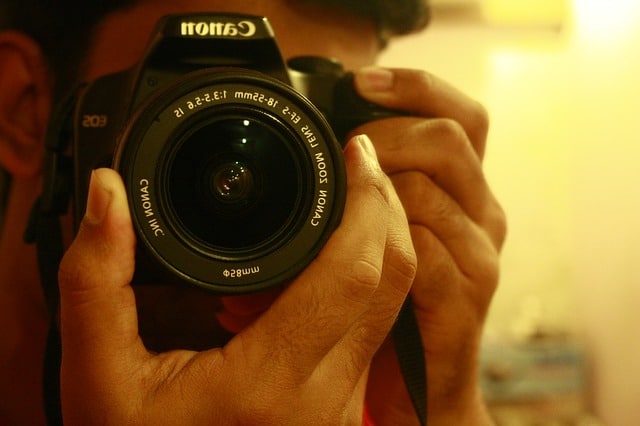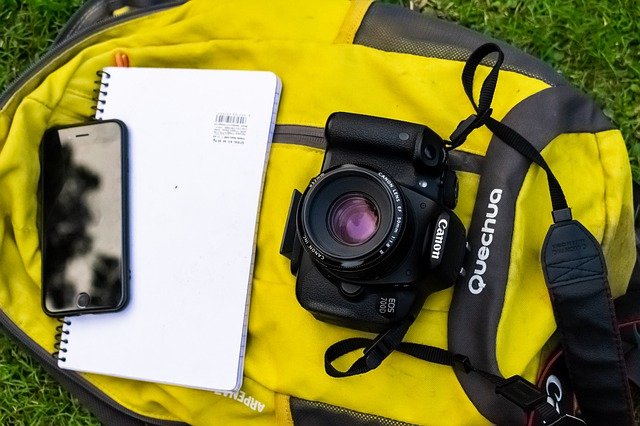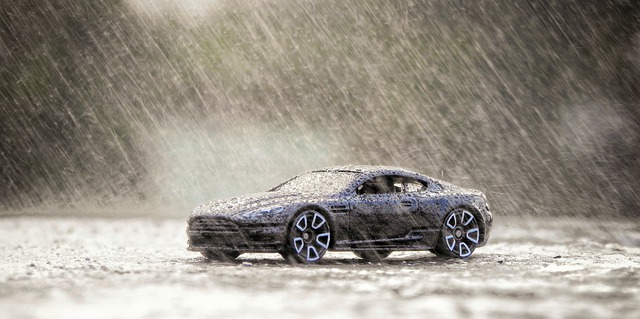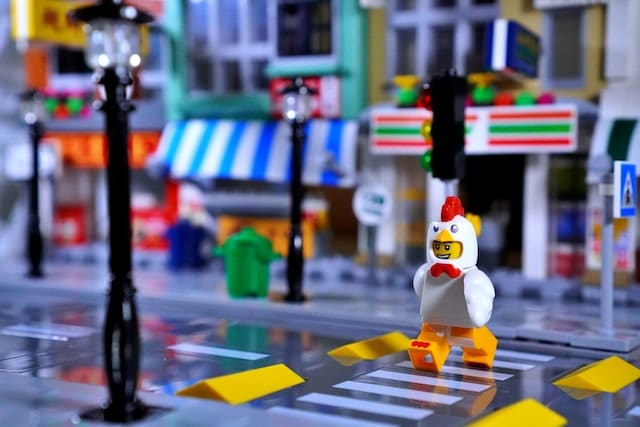When choosing between cool and warm colors in toy photography, think about the mood and story you want to convey. Warm colors like reds and oranges infuse energy, making them perfect for action scenes, while cool tones like blues and greens bring calm and depth, ideal for serene subjects. Mixing these can create contrast and focus, drawing attention to specific elements. Adjust your light sources accordingly: natural light often warms an image, while artificial light may cool it down. Test different balances to see what highlights the scene best. Explore further to enhance your toy photography with impactful color choices.
Understanding Color Temperature
Understanding color temperature is vital in toy photography because it affects the mood and realism of your images. When you're setting up your shots, consider whether you want to evoke warmth or coolness. Warm colors, like reds and yellows, generally create a cozy, inviting atmosphere. They can make your toy scenes feel lively and energetic, perfect for portraying summer adventures or cheerful gatherings. On the other hand, cool colors, such as blues and greens, typically bring a sense of calm and tranquility, which we'll explore in more detail later.
To effectively manage color temperature, pay attention to your light sources. Natural sunlight tends to lean warm, especially during golden hours, while artificial lights can vary. LEDs often emit cooler tones, but you can find options to match your desired warmth. Experiment with different lighting setups to see how they alter the perception of your toys.
Adjusting your camera's white balance is another important step. It guarantees the colors in your photos appear natural and true to life. Most cameras offer presets for different lighting conditions, but manually adjusting the white balance can give you better control and more accurate results.
Impact of Cool Colors
When you explore the impact of cool colors in toy photography, you'll discover they bring a unique sense of serenity and depth to your scenes. Cool colors, like blues, greens, and purples, can transform your images by adding a calming effect that resonates with viewers. These hues are perfect for creating a tranquil atmosphere, making them ideal for scenes that depict peaceful or introspective moments.
By incorporating cool colors, you can emphasize a toy's features or highlight specific elements in your composition. For instance, a deep blue background can make a brightly colored toy pop, drawing the viewer's eye directly to it. Cool colors also work well in conveying emotions such as sadness or mystery, providing an emotional depth that invites viewers to linger and explore the scene further.
Lighting plays an important role in enhancing the impact of cool colors. Soft, diffused lighting complements these hues, enhancing their soothing qualities. You might use natural light at dawn or dusk, or employ artificial lighting with a bluish tint to achieve the desired effect. Experiment with different shades and intensities to see how they transform your toy photography, creating engaging and memorable images.
Effects of Warm Colors
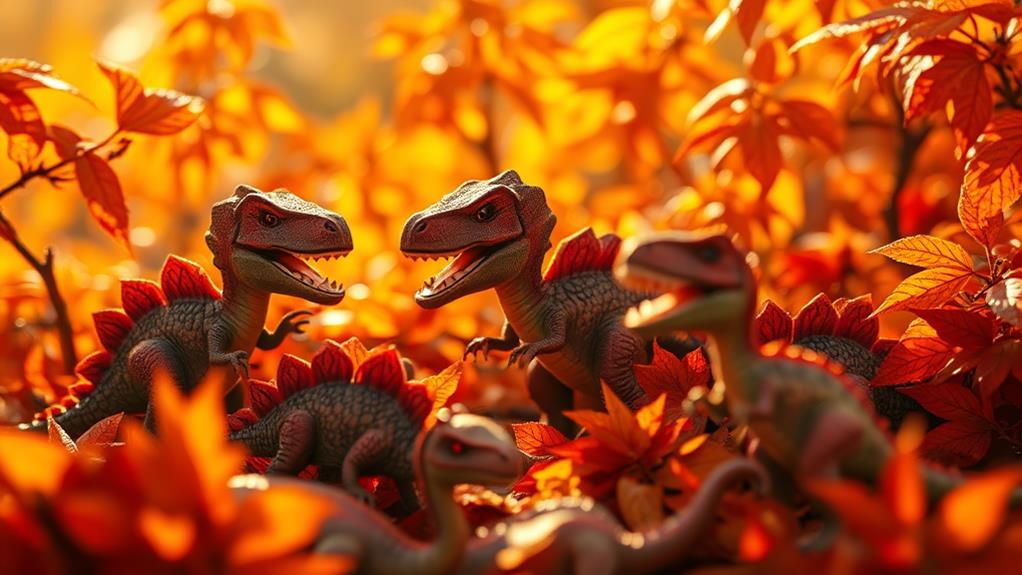
Warm colors can infuse your toy photography with energy and emotion, transforming your scenes into vibrant expressions of creativity. By incorporating hues like red, orange, and yellow, you can evoke feelings of warmth, excitement, and passion. These colors naturally draw the eye, making them perfect for highlighting key elements in your composition. Imagine a toy character surrounded by a sunset glow, or an action figure caught in the middle of a fiery explosion. Warm tones can make these moments feel alive and dynamic.
When you use warm colors, you create a sense of intimacy and connection. They can give your audience a feeling of warmth and comfort, making your shots more relatable and engaging. Warm colors are particularly effective in storytelling, as they can suggest time of day, season, or even a specific mood. For instance, a scene bathed in golden light can suggest the coziness of autumn or the heat of summer.
In addition, warm tones can bring out textures and details in your toys, adding depth to your photos. They can enhance the vibrancy of your subjects, making them pop against any background. By mastering warm colors, you'll add a new dimension to your toy photography.
Balancing Cool and Warm Tones
While warm colors can electrify your toy photography with emotion and energy, incorporating cool tones introduces balance and harmony. By using a mix of both, you can create dynamic compositions that captivate viewers. Start by choosing a primary color scheme, then consider how cool hues like blues and greens can complement the warmth of reds, oranges, and yellows.
To achieve balance, use cool colors to highlight specific details or create a sense of depth. For example, if your scene is characterized by warm tones, a cool background can provide contrast, making your subject pop. Alternatively, cool shadows can help ground a brightly colored figure, adding realism and dimension.
Experiment with the ratio of cool to warm tones, adjusting based on the story you want to convey. Sometimes, a subtle hint of cool in a primarily warm image can add intrigue, while a splash of warm in a cooler scene can draw attention to key elements.
Choosing Colors for Mood

Colors play an essential role in setting the mood of your toy photography. They can evoke emotions, tell stories, and guide the viewer's perception. When you're choosing colors, think about the feeling you want to convey. Warm colors like reds, oranges, and yellows can create a sense of warmth, excitement, or even tension. They're perfect for action scenes, adventures, or dramatic moments. On the other hand, cool colors such as blues, greens, and purples can evoke calmness, tranquility, or mystery, making them ideal for serene landscapes or introspective subjects.
Consider the narrative you're crafting. If your photo tells a story of a cozy campfire gathering, incorporate warm tones to enhance the feeling of warmth and togetherness. For a mystical underwater scene, cool hues will help establish an ethereal atmosphere.
Pay attention to contrasts and harmonies. A splash of color contrast can draw attention to specific elements, while harmonious colors can unify the composition. Don't hesitate to experiment. Adjusting the saturation and brightness can also alter the mood considerably. By thoughtfully choosing and combining colors, you can transform your toy photography into a powerful visual story, capturing the essence of your creative vision.
Enhancing Depth With Colors
In toy photography, enhancing depth with colors can really make your images pop. By strategically using color to create a sense of dimension, you can transform a flat scene into a visually dynamic one. Start by considering cool and warm colors' roles. Cool colors like blues and greens tend to recede in an image, creating the illusion of distance, while warm colors like reds and yellows appear to advance, bringing subjects forward. Use this knowledge to place cooler hues in the background and warmer tones in the foreground, instantly adding depth to your composition.
Another technique is to utilize color contrast. Choose complementary colors—those opposite each other on the color wheel—like blue and orange. This contrast not only draws attention but also enhances the perception of depth. When you juxtapose these colors, your toys can stand out more vividly against their surroundings.
Color Harmony in Compositions
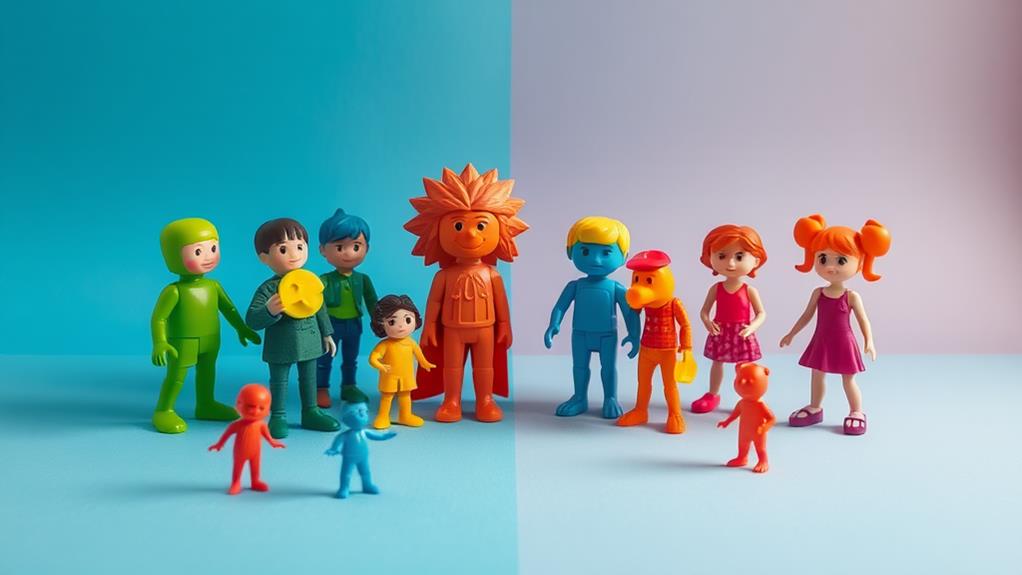
Building on the use of color for enhancing depth, achieving color harmony in your compositions is key to creating visually appealing toy photographs. When colors in your photo complement each other, they guide the viewer's eye and convey a sense of balance. Start by understanding the color wheel—it's your best friend. Pairing colors that sit opposite each other, like blue and orange, can create a striking contrast while still maintaining harmony.
Consider analogous colors, which are neighbors on the wheel, such as blue, teal, and green. These colors work together to produce a tranquil and cohesive feel. Don't overlook the power of using a monochromatic scheme, which involves varying shades of a single color. This approach creates a sophisticated look without overwhelming the scene.
Pay attention to the emotional impact of your chosen colors. Warm colors like red and yellow evoke energy and excitement, while cool colors like blue and green can calm and soothe. Think about the story you want your photo to tell and use colors to enhance that narrative. By mastering color harmony, you'll elevate your toy photography and engage your audience more effectively.
Practical Tips for Color Selection
Immerse yourself in the art of selecting colors for your toy photography by starting with a specific goal or emotion in mind. Whether you want to convey joy, mystery, or nostalgia, choosing the right color palette can make all the difference. Understanding how colors influence perception will help you create compelling images. Here's how you can pick the perfect colors for your next shoot:
- Know Your Theme: Decide if your theme calls for cool or warm tones. Cool colors like blues and greens can evoke calmness, while warm colors like reds and yellows can create a sense of excitement or warmth.
- Consider Lighting: Natural light can enhance warm tones, while artificial lighting might work better for cool tones. Experiment with different light sources to see how they affect your selected colors.
- Use Color Wheel: Familiarize yourself with the color wheel to identify complementary colors. This will help you create balance in your shots and make your subjects pop.
- Test and Adjust: Don't be afraid to take test shots. Adjust colors in post-production if needed to achieve the desired effect, ensuring your toys look vibrant and your message is clear.
Frequently Asked Questions
How Do I Adjust My Camera Settings to Capture Accurate Color Temperatures in Toys?
To adjust your camera settings for accurate color temperatures, set your white balance manually or use presets matching your light source. Experiment with Kelvin settings for precision. Check your camera's histogram to verify proper exposure and color accuracy.
Can I Use Colored Lighting to Enhance the Toy's Features?
You can use colored lighting to highlight, to accentuate, to amplify the toy's features. Experiment with gels, filters, and LEDs. Colored lights can create mood, convey emotion, and transform ordinary shots into extraordinary art.
What Post-Processing Techniques Can Help Achieve Desired Color Effects?
In post-processing, you can adjust saturation and hue to fine-tune colors. Use selective color adjustments to highlight specific elements. Experiment with color grading and split toning for mood enhancement. Don't forget to tweak contrast for depth.
How Do Different Materials of Toys Affect Color Perception in Photos?
Imagine photographing a shiny plastic car: its reflective surface might amplify colors, making them appear more vibrant. You're capturing toys, so observe how different materials interact with light, altering color perception and enhancing your photo's visual appeal.
Are There Specific Color Combinations That Work Best for Certain Toy Genres?
You'll find that pairing bright primary colors with action figures enhances their dynamic appeal, while pastel hues complement doll photography beautifully. Experiment with contrasting colors for fantasy toys to create an enchanting, otherworldly atmosphere in your shots.
At a Glance
In toy photography, choosing colors cleverly can create enchanting compositions. Cool colors convey calmness and clarity, while warm hues bring warmth and wonder. Balance both to build depth and dimension in your designs. Decide on the desired mood and let it dictate your color decisions. Dabble with different shades to discover delightful dynamics. Harmonize hues for a holistic and harmonious image. With these tips, you'll transform your toy photography into a tapestry of tantalizing tones.


